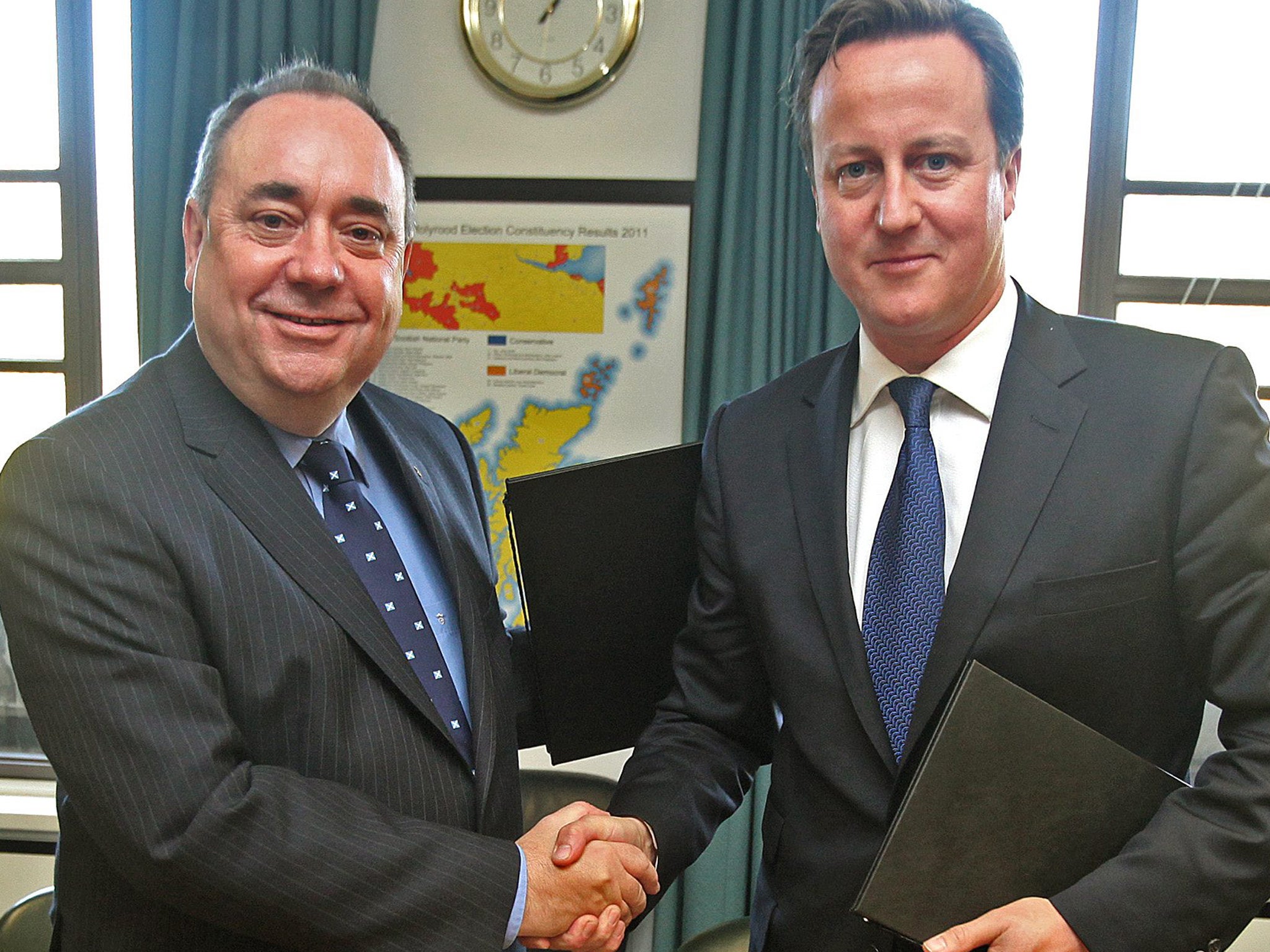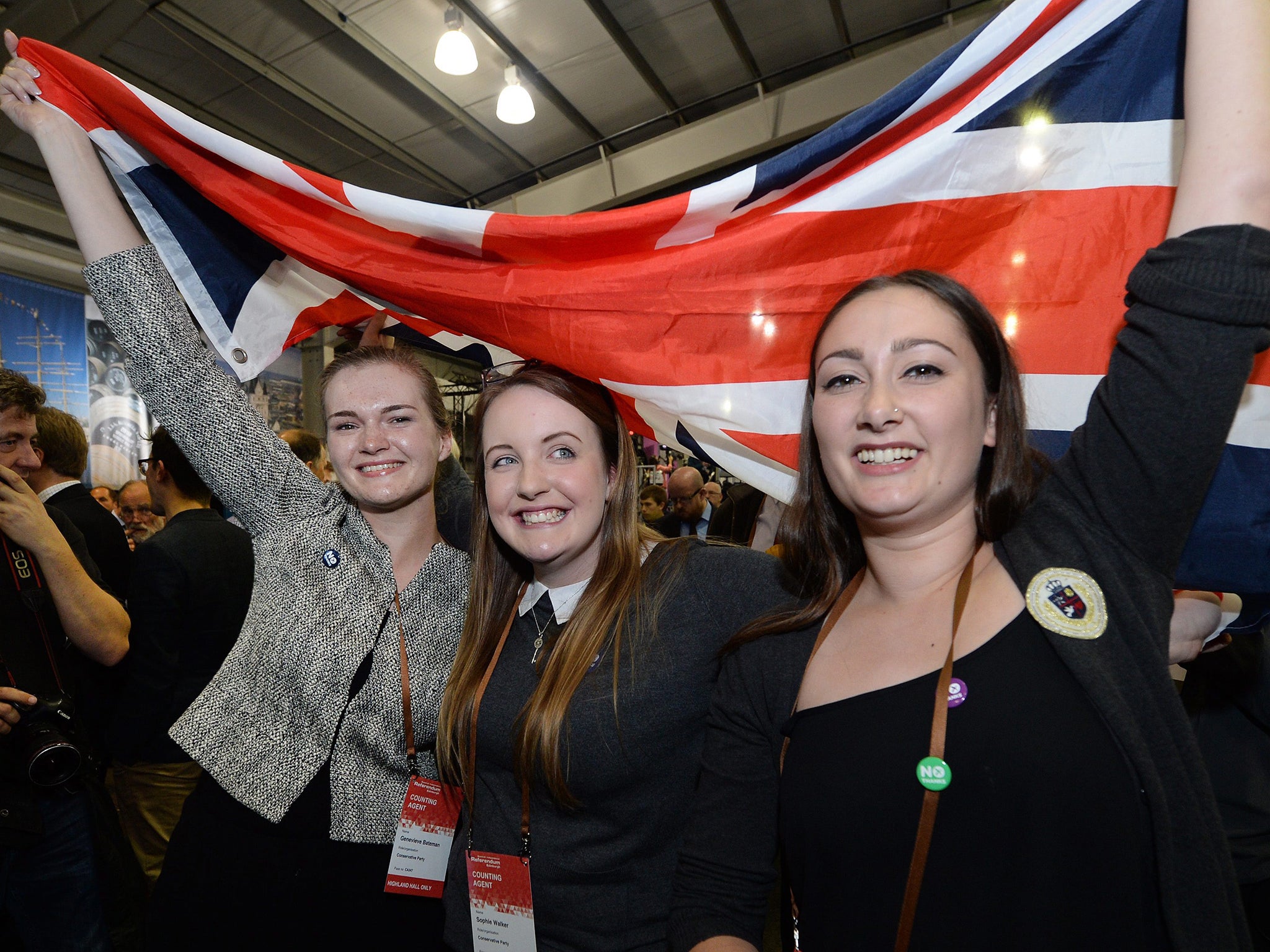Scottish referendum's swings and turnabouts: two years on the long road to poll position
Most of the pollsters are probably now breathing a sigh of relief


When David Cameron and Alex Salmond signed the Edinburgh Agreement two years ago, paving the way for Thursday’s referendum, it looked like the nationalists had taken on an almost impossible task. Far from persuading voters of the merits of independence, the experience of having a robust SNP government in power had seemingly persuaded Scots that devolution could be made to work to Scotland’s advantage after all.
The 2012 Scottish Social Attitudes survey put support for independence at a record low of just 23 per cent.
Agreement on the question to appear on the referendum ballot paper, “Should Scotland be an independent country?”, was reached shortly thereafter in February 2013. But the first polls of how people would respond to the question were discouraging for the Yes side. Most put its support at below 40 per cent, even when Don’t Knows were left aside.
Meanwhile Yes made very little progress during the largely phoney war that played out over the ensuing months. By the end of 2013 the polls still put the Yes vote on no more than 39 per cent.
But at the end of November last year, the Scottish Government published its prospectus for independence. Instead of being endlessly on the back foot, the Yes campaign was now equipped with a 600-page plan to promote.
Once the Hogmanay celebrations were over, voters sat up and took notice. Yes support edged up to an average of 41 per cent.
That seemed to unsettle the nerves of the No campaign. In the middle of February the Chancellor announced the UK would not be willing to allow an independent Scotland to share the pound in a monetary union, an announcement backed by his Labour and Liberal Democrat counterparts. The No campaigners were confident that undecided voters would recoil in horror at the prospect of losing sterling.
But it did not work out that way. Many a voter believed Alex Salmond’s claim that the Unionists were “bluffing”. Indeed, the Yes campaign continued to make further progress, reaching an average of 43 per cent in the polls by the end of March.
However, the average vote hid significant disagreement between the pollsters. Some persistently reported support for Yes at 45 per cent or above, while others rarely put it at more than 40 per cent.
The poorly understood reasons behind this discrepancy threatened serious embarrassment for the polling industry if it continued until voting day, but it meant the hopes of the Yes side were buoyed by the possibility that the more flattering polls might be right.
However, the Yes campaign then appeared to stall. SNP hopes that the political differences between Scotland and England would be exemplified by a failure by Ukip to win a European seat in Scotland were dashed when former City trader David Coburn was elected an MEP.
At the beginning of August, when the first televised debate between the two campaign leaders took place, Yes support was still much the same as it had been in April.
But then something stirred, even though Alex Salmond was thought to have lost the first debate. There were signs of movement to Yes, which became stronger after Mr Salmond’s more assured performance in a second televised debate. At the beginning of September, YouGov became the first pollster to put Yes ahead, and soon all pollsters agreed that the race was now a keenly fought contest.

That impelled a second major intervention by the No side, a push initiated when Gordon Brown announced that Unionist parties would follow an accelerated timetable towards greater devolution following a No vote.
That – and many a warning about the alleged economic risks of independence – seemed to stem the nationalist tide in the last week and may have even helped to create a bit of a late swing back to No.
In the event, when the ballot boxes were opened the No side, with 55 per cent of the vote, had won with some room to spare. Although all the final polls had pointed to victory for the No side, none had suggested it would do quite that well. All had put No on 52 or 53 per cent, while even an on-the-day exercise by YouGov estimated the No tally at 54 per cent. But given the challenge of measuring accurately something they had never had to estimate before, most of the pollsters are probably now breathing a sigh of relief.
John Curtice is Professor of Politics at Strathclyde University

Join our commenting forum
Join thought-provoking conversations, follow other Independent readers and see their replies